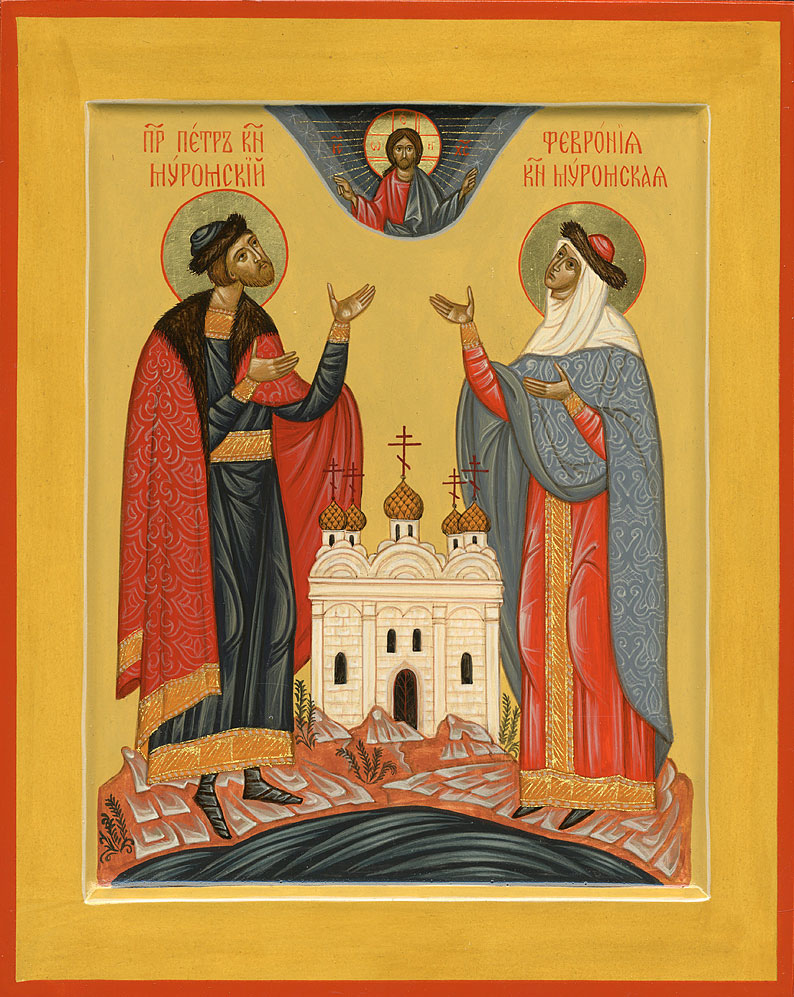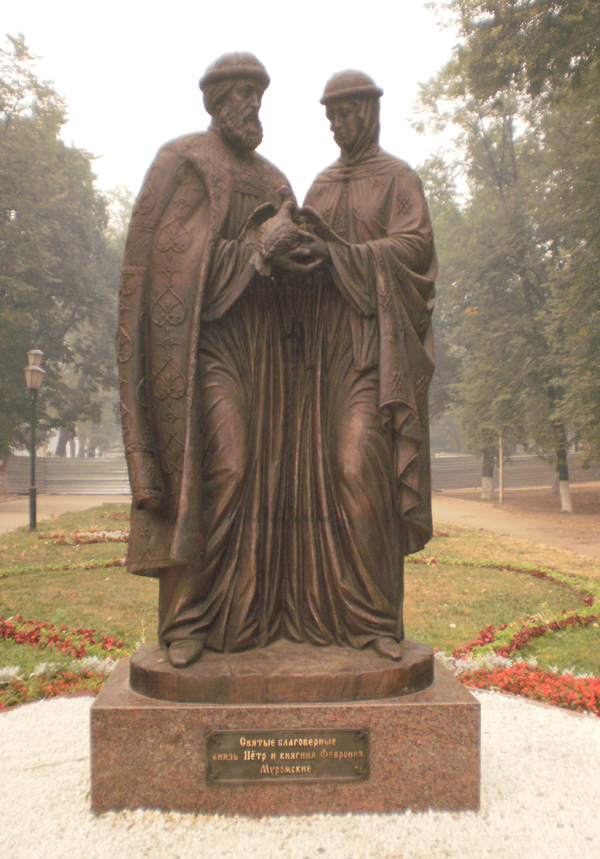By Deirdre Jost

In Russian culture, Peter and Fevronia represent the traditional male-female binary, holding characteristics that allow them to reflect each other. Peter, representing masculinity, is brave and chivalrous. In the traditional tale of the two, he was first introduced when deciding to “fight the evil serpent. . . with the help of God” to save his sister-in-law’s virtue (Zenkovsky 292). Although he initially broke his promise with Fevronia due to her lower status, he righted his error and even “gave up his rule over the city of Murom” for her (Zenkovsky 297). Fevronia is equally pious, and is also a kind and intelligent maiden who works primarily as a healer. She was introduced in the home, the traditional sphere of influence of women, and is first described as “a beautiful maiden who was weaving” (Zenkovsky 293). These descriptions establish Peter and Fevronia as emblematic of the male and female archetypes, traditionally thought of as complete binary opposites.
However, these opposite depictions do not set them against each other. For scholars, most
of the binaries used to study Russian folklore are viewed as almost antagonistic: not just man vs woman, but past vs future, East vs West, and paganism vs Christianity. Peter and Fevronia are established throughout the story as partners who work together in harmony, not enemies, with their individual qualities each contributing to the larger goal. Although Peter initially resists their marriage, he eventually gives in and is faithful to her even after the loss of his power. Nowhere is this partnership more clear than at the end of their lives, when they express their wishes to be buried together. Although they were twice buried separately due to their monastic vows, their bodies “were found together in the tomb”, having left sealed caskets in two separate churches (Zenkovsky 300). They were two separate people, but they were buried as one.
Their burial establishes to readers that their love for each other ties them together so tightly that even death dare not separate them. In Orthodox tradition, it was considered wrong for two people who had taken monastic vows to be buried together. Because Peter and Fevronia end up laid to rest in the same casket, they are thus so close they can be considered one soul. This is used to demonstrate an important point about the male-female binary (and other binaries in Russian culture): it is not truly one or the other. They may be separate, but the roles of man and woman are codependent on each other in order to survive. In Peter and Fevronia, the binary reveals itself not as two opposites, but as two facets of the same whole.
Deirdre Jost is a math major at Miami.

Work Cited:
“Peter and Fevronia of Murom” in Medieval Russia’s Epics, Chronicles and Tales by S. Zenskovsky (New York: Meridian, 1974).
